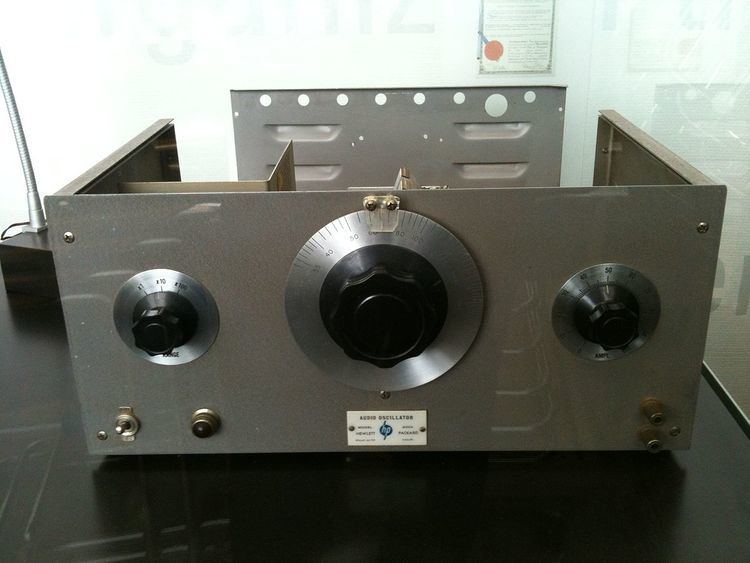 | ||
The HP200A was the first product made by Hewlett-Packard and was manufactured in David Packard's garage in Palo Alto, California.
It was a low-distortion audio oscillator used for testing sound equipment. It used the Wien bridge oscillator circuit, that had been the subject of Bill Hewlett's Masters thesis. It was also the first such commercial oscillator to use a simple light bulb as the temperature-dependent resistor in its feedback network. The light bulb was an inexpensive and effective automatic gain control that not only kept the oscillator output amplitude constant, but it also kept the oscillator's loop gain near unity. The latter is a key technique for achieving a low distortion oscillator. Earlier, Meacham had used light bulbs in bridge circuits to stabilize and linearize oscillators in 1938.
The product code was chosen to give the impression that HP was an established company. Walt Disney bought eight of them for use in the production of Fantasia.
The circuit diagram is shown in Hewlett's 1939 patent.
Development
Through the 1940s and into the 1950s, the subsequent versions of the 200A covered different and wider frequency ranges. The latest version was the 200CD; it covered from the subaudio 5 Hz to the low end of the AM radio band at 600 kilohertz. The 200CD became a ubiquitous audio generator in engineering laboratories worldwide from the 1950s to the 1990s.
